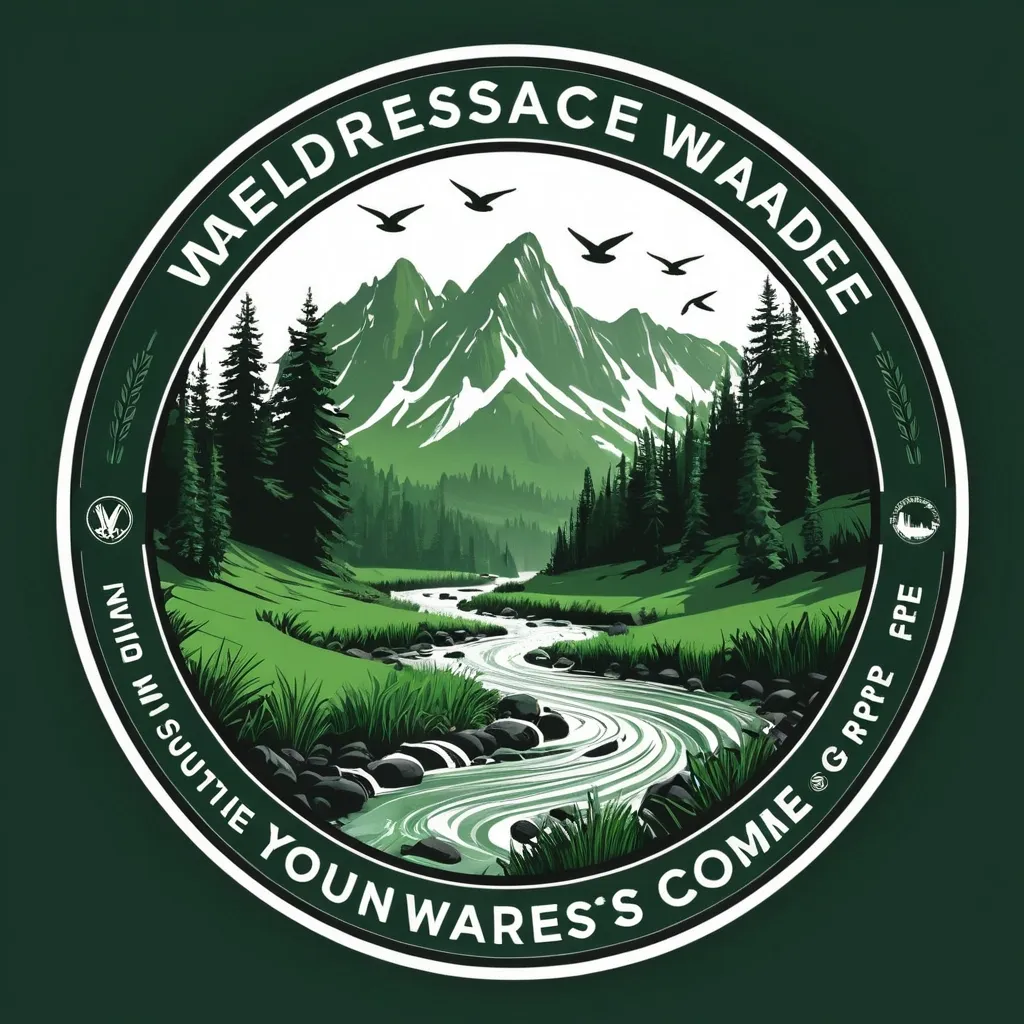Search Results for walk
Explore AI generated designs, images, art and prompts by top community artists and designers.

“Keltic shaman meditating on a city sidewalk at sunset , with a luminous tree growing from their heart. Branches are poetic text , leaves are musical notes , roots are dancing figures embedded in the earth. Ordinary people passing by are subtly touched by light. Symbolic , gentle power , blending mundane and magical , style of surrealism and light painting , emotional and grounding” ,

“Keltic shaman meditating on a city sidewalk at sunset , with a luminous tree growing from their heart. Branches are poetic text , leaves are musical notes , roots are dancing figures embedded in the earth. Ordinary people passing by are subtly touched by light. Symbolic , gentle power , blending mundane and magical , style of surrealism and light painting , emotional and grounding” ,

“Keltic shaman meditating on a city sidewalk at sunset , with a luminous tree growing from their heart. Branches are poetic text , leaves are musical notes , roots are dancing figures embedded in the earth. Ordinary people passing by are subtly touched by light. Symbolic , gentle power , blending mundane and magical , style of surrealism and light painting , emotional and grounding” ,

“Keltic shaman meditating on a city sidewalk at sunset , with a luminous tree growing from their heart. Branches are poetic text , leaves are musical notes , roots are dancing figures embedded in the earth. Ordinary people passing by are subtly touched by light. Symbolic , gentle power , blending mundane and magical , style of surrealism and light painting , emotional and grounding” ,

A visionary DJ surrounded by levitating instruments made of light and sacred geometry , mixing soundwaves that form bridges between earth and stars. People are walking across these resonant bridges , laughing and embracing. Vibrant colors , cosmic theme , community unity , style of digital art by Chris Dyer and Luke Brown , detailed , uplifting , metaphysical ,

A visionary DJ surrounded by levitating instruments made of light and sacred geometry , mixing soundwaves that form bridges between earth and stars. People are walking across these resonant bridges , laughing and embracing. Vibrant colors , cosmic theme , community unity , style of digital art by Chris Dyer and Luke Brown , detailed , uplifting , metaphysical ,

A visionary DJ surrounded by levitating instruments made of light and sacred geometry , mixing soundwaves that form bridges between earth and stars. People are walking across these resonant bridges , laughing and embracing. Vibrant colors , cosmic theme , community unity , style of digital art by Chris Dyer and Luke Brown , detailed , uplifting , metaphysical ,

A visionary DJ surrounded by levitating instruments made of light and sacred geometry , mixing soundwaves that form bridges between earth and stars. People are walking across these resonant bridges , laughing and embracing. Vibrant colors , cosmic theme , community unity , style of digital art by Chris Dyer and Luke Brown , detailed , uplifting , metaphysical ,

A futuristic , ultra-modern house shaped like a giant snail shell , seamlessly blending organic curves with sleek , high-tech architecture. The spiraling structure features smooth , metallic surfaces interspersed with large , energy-efficient glass panels that reflect the surrounding landscape. The exterior is a harmonious mix of polished chrome , matte silver , and subtle LED lighting embedded along the contours , giving it a glowing , ethereal appearance at night. The entrance is a grand , circular opening framed by an archway of glowing neon , leading into an open-concept interior where the spiral design continues with floating staircases and curved walkways. The roof is adorned with solar panels and green rooftop gardens , merging sustainability with avant-garde design. Surrounding the house is a minimalist , futuristic garden with geometric shrubs , illuminated pathways , and floating orbs of light that hover above the ground. The scene is set in a serene , slightly elevated landscape with soft rolling hills in the background , under a sky painted with the warm hues of either a sunrise or sunset. The overall aesthetic is a perfect balance between nature-inspired fluidity and cutting-edge technology , evoking a sense of wonder and innovation. The style is hyper-detailed , with crisp lines , dynamic lighting , and a cinematic composition that emphasizes both the grandeur and the intricate details of the design. ,

Modern Luxe style , Residential interior design , Deep jewel tones , Light floors , White matte ceiling , Floor-to-ceiling storage , No beige/grey/white wall backgrounds , Warm lighting (2700-3000K) , Rich textures (velvet , gloss , metal) , High detail , 8K , Photorealistic , Architectural Digest style L-shaped kitchen unit: Glossy Wine-Burgundy lower cabinets , Matte muted Terracotta upper cabinets extending to ceiling. Dark quartz countertop. Gold mosaic backsplash reflecting light. No kitchen island. Compact dining table with Indigo velvet chairs , brass legs. Visual separation: Low open shelving unit (matte black) between zones. Living room: Dusty Rose walls , Emerald Green accent wall behind a Dark Blue velvet sofa. Light "Statuario" floor throughout. Integrated floor-to-ceiling storage with LED lighting. Warm brass pendant lights over dining , track lighting in living. Photorealistic , detailed materials. Serene master bedroom: Matte Indigo Blue accent wall behind bed with luxurious velvet headboard. Soft Lavender on other walls. Floor-to-ceiling matte white gloss wardrobe. High-pile Dusty Rose area rug on light flooring. Brass wall sconces with linen shades (2700K). Matte textures , dimmable lighting , no harsh contrasts. Realistic fabric textures (velvet , linen). Productive home office: Walls in soft Sage Green with deep Emerald Green accent behind desk. Floor-to-ceiling storage cabinets in matte Wormwood (Полынь) or Sage Green. Floating dark oak desk. Leather Wine-Burgundy chair. Black metal open shelves. Task lighting: 4000K adjustable desk lamp + warm ambient spots. Light floors , white ceiling. Minimal decor , focused atmosphere. Luxury bathroom: Matte Dark Blue walls with gold mosaic niche. Floating white gloss vanity. Full-wall mirror with integrated LED lighting. Walk-in shower with rainfall head. Light anti-slip tiles. Brass fixtures. Floor-to-ceiling storage cabinet above toilet. Steam , clean lines , high-end materials. Photorealistic water reflections. Functional utility room: Serene Smoky Moss (Дымный мох) matte floor-to-ceiling cabinets. Soft Grey-Blue walls. Durable light flooring. Built-in washing machine/dryer , pull-out ironing board , labeled storage bins. Bright 4000K LED panel lighting. Bronze handles. Neat , organized , no clutter. Calm nursery for baby: Soft Cloudy Blue walls with muted Mint Green accent wall. Matte Ecru floor-to-ceiling cabinets (rounded corners). Natural wood crib. Cork flooring. Playful "lawn-shaped" rug. Cloud-shaped ceiling light + 2200K nightlight. Storage: Lower toy drawers , upper clothing shelves. Blackout curtains. Safety features: socket covers , soft edges. Gentle , airy , growth-friendly space. - AVOID: Beige , grey , or white wall backgrounds. - MUST: Deep colored accent walls (emerald , burgundy , indigo) dominate. - Lighting: Warm (2700-3000K) everywhere except task zones (4000K). Use dimmers , LEDs , brass fixtures. - Storage: Seamless floor-to-ceiling cabinets dominate each room. - Textures: Contrast matte (walls , velvet) + gloss (kitchen , vanity) + metal (brass , bronze). - Floor: Uniform light large-format tile (except nursery: cork). - Mood: Luxurious but livable; dramatic colors balanced by light floors/ceiling. --no beige , grey walls , white walls , cluttered space , cold lighting , separate rooms , rugs in kitchen ,

Luxury bathroom: Matte Dark Blue walls with gold mosaic niche. Floating white gloss vanity. Full-wall mirror with integrated LED lighting. Walk-in shower with rainfall head. Light anti-slip tiles. Brass fixtures. Floor-to-ceiling storage cabinet above toilet. Steam , clean lines , high-end materials. Photorealistic water reflections. ,

Plan de profil de Very curvy bbw bimbo muscular too busty housewife with too big implants breast , enormous ass , bbw muscular enormous bimbo powerlifteuse , abnormally massive female muscular bodybuilder , bbw , Géante dame en talons , very big ass , curvacious , gorgeous , Sofia vergara face flexing sensually while walking in fashion show podium at evening , wearing a black latex party dress décolletée , gros seins en évidence , gros biceps énormes , biggest ass , cuisses en évidence , portant des talons , make up , mini latex gloves , vue de profil ,

Surreal scene of the (full body) lady walked from wavy striped street , in white Saree , a balloons into three Spiral striped: Orange , White and Green , head in frame. Bubbles float serenely across a clear night sky , dreamlike ambiance , vibrant tricolors hues , majestic aura , detailed embroidery , fantasy setting , lavish presentation , surreal beauty , mesmerizing floral expanse , enchanting atmosphere , realistic , ,

Chiaroscuro full lenght body of A melancholic woman with flowing hair walking in Silent Hill town. lonely witchy town , fog , acid fog , her face partially obscured by shadows. from Silent Hill perfect film composition. Chiaroscuro lighting , deep shadows , sharp contours , emotional depth , desaturated palette , monochrome blacks , muted grays , pale white , red hint , thick atmosphere , heavy air , cinematic mood. Gregory Crewdson , Dave McKean , Gottfried Helnwein. Canon EOS 5D , f/1.2 aperture , grain overlay , high contrast , cinematic post , internal collapse , frozen scream , black and white photography , a masterpiece , best quality , 8k resolution. ,

Plan de profil de Very bbw bimbo muscular too busty housewife with too big implants breast , enormous ass , bbw muscular enormous bimbo powerlifteuse , abnormally massive female muscular bodybuilder , bbw , Géante dame , very big ass , curvacious , gorgeous , Margot Robbie face , flexing arms sensually while walking down the runway with clenched fist in victory pose at fashion show in front of publics , wearing a gris clair satin soaked sundress décolletée , gros seins en évidence , gros biceps énormes , flexing muscles , cuisses en évidence , flexing biceps , make up , muscle show poster , vue de profil ,

Plan de profil de Very bbw bimbo muscular too busty housewife with too big implants breast , enormous ass , bbw muscular enormous bimbo powerlifteuse , abnormally massive female muscular bodybuilder , bbw , Géante dame , very big ass , curvacious , gorgeous , Margot Robbie face , flexing arms sensually while walking down the runway with clenched fist at fashion show in front of publics , wearing a vert clair satin soaked sundress décolletée , gros seins en évidence , gros biceps énormes , flexing muscles , cuisses en évidence , flexing biceps , make up , muscle show poster , vue de profil ,

Plan de profil de Very bbw bimbo muscular too busty housewife with too big implants breast , enormous ass , bbw muscular enormous bimbo powerlifteuse , abnormally massive female muscular bodybuilder , bbw , Géante dame , very big ass , curvacious , gorgeous , Margot Robbie face , flexing arms sensually while walking down the runway with clenched fist at fashion show in front of publics , wearing a vert clair satin soaked sundress décolletée , gros seins en évidence , gros biceps énormes , flexing muscles , cuisses en évidence , flexing biceps , make up , muscle show poster , vue de profil ,

Plan de profil de Very bbw bimbo muscular too busty housewife with too big implants breast , enormous ass , bbw muscular enormous bimbo powerlifteuse , abnormally massive female muscular bodybuilder , bbw , Géante dame , very big ass , curvacious , gorgeous , Margot Robbie face , flexing arms sensually while walking down the runway with clenched fist at fashion show in front of publics , wearing a vert clair dentelle soaked sundress décolletée , gros seins en évidence , gros biceps énormes , flexing muscles , cuisses en évidence , flexing biceps , make up , muscle show poster , vue de profil ,
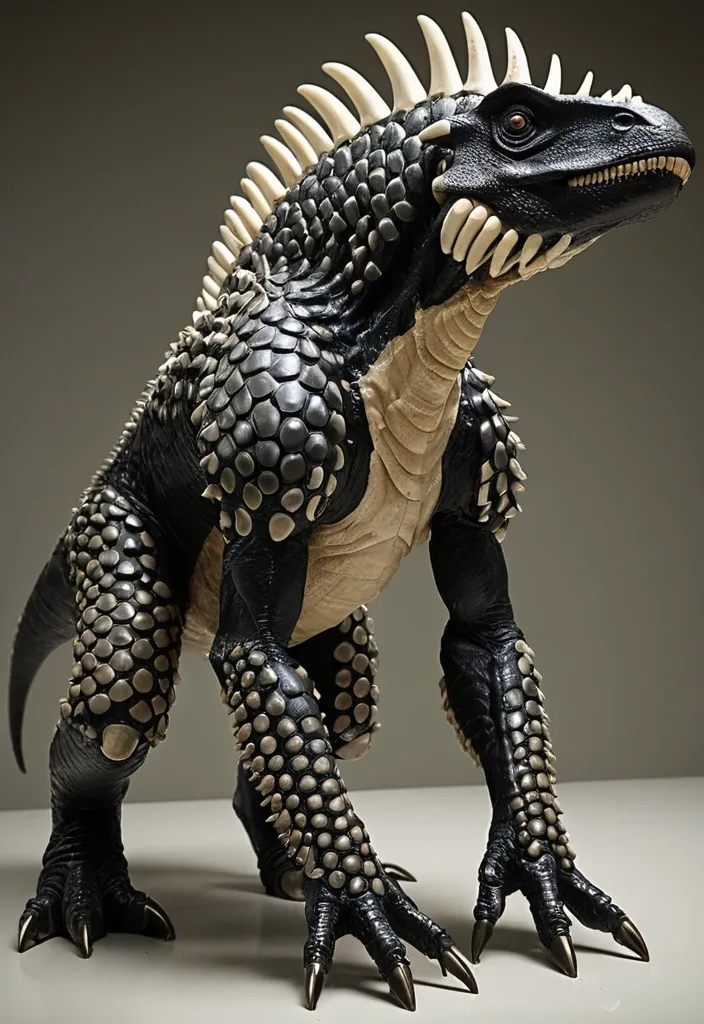
Physical Characteristics: Venenosus Regina is a titanic hybrid dinosaur standing approximately 20 feet tall at the shoulders and stretching 40 feet in length. Its frame is a powerful fusion of Tyrannosaurus rex and Giganotosaurus bulk , with a head shape that blends the robust cranial features of Giganotosaurus and the bony crown of Triceratops. The jawline is adorned with formidable bony spikes on each side , reminiscent of Triceratops horns , enhancing both offense and defense. Its body is armored with large , jet-black , glossy keratin scales inherited from Giant Pangolin DNA , interspersed with cream-colored underbelly patches. These scales are embedded with chromatophore cells from cuttlefish DNA , allowing Venenosus Regina to rapidly alter its skin color , texture , and pattern for camouflage or intimidation. The overall silhouette is muscular , lean and agile , with reduced hind legs that enable knuckle-walking , a trait borrowed from chimpanzee DNA , granting it a unique locomotion style that balances speed and stability.The forelimbs are robust and highly dexterous , equipped with slashing hook claws inspired by Saurophaganax and chimpanzee genetics , capable of delivering devastating swipes and manipulating tools or prey with precision. ,
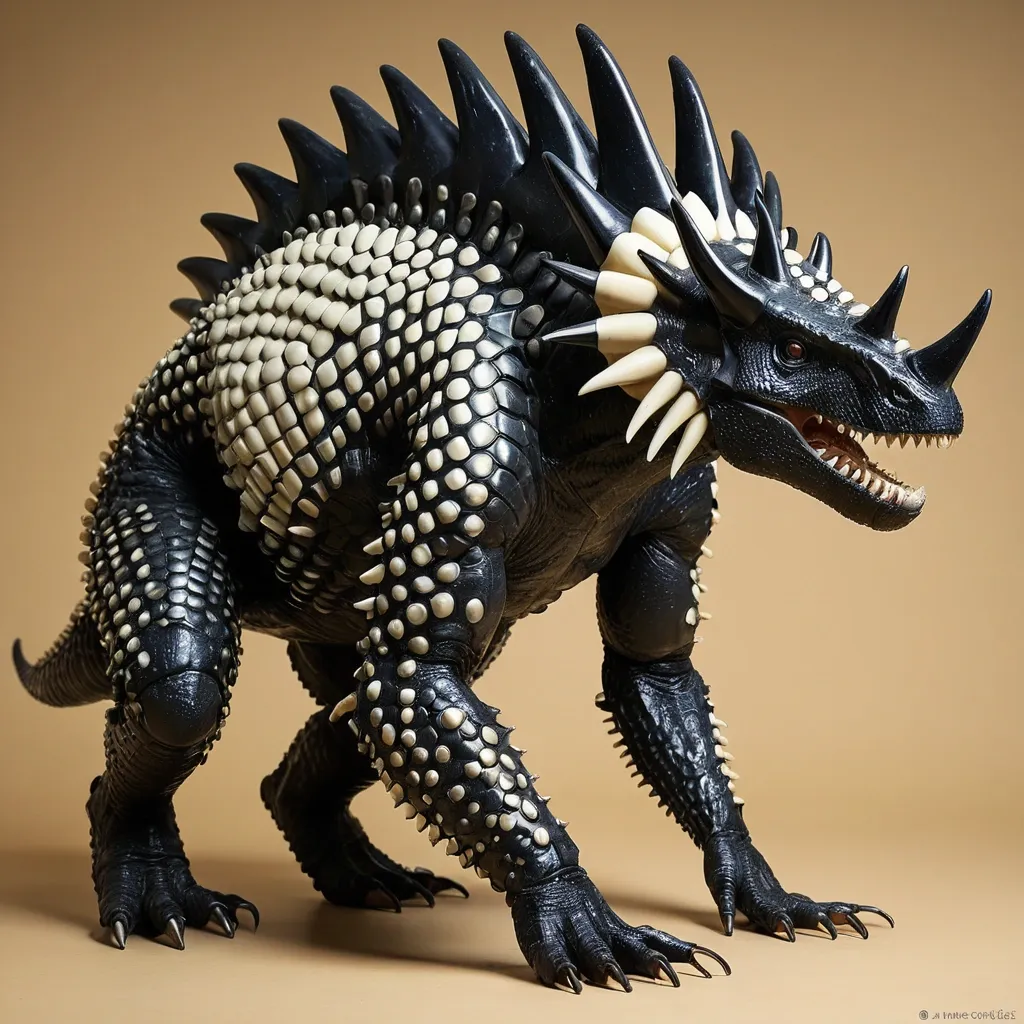
Physical Characteristics: Venenosus Regina is a titanic hybrid dinosaur standing approximately 20 feet tall at the shoulders and stretching 40 feet in length. Its frame is a powerful fusion of Tyrannosaurus rex and Giganotosaurus bulk , with a head shape that blends the robust cranial features of Giganotosaurus and the bony crown of Triceratops. The jawline is adorned with formidable bony spikes on each side , reminiscent of Triceratops horns , enhancing both offense and defense. Its body is armored with large , jet-black , glossy keratin scales inherited from Giant Pangolin DNA , interspersed with cream-colored underbelly patches. These scales are embedded with chromatophore cells from cuttlefish DNA , allowing Venenosus Regina to rapidly alter its skin color , texture , and pattern for camouflage or intimidation. The overall silhouette is muscular , lean and agile , with reduced hind legs that enable knuckle-walking , a trait borrowed from chimpanzee DNA , granting it a unique locomotion style that balances speed and stability.The forelimbs are robust and highly dexterous , equipped with slashing hook claws inspired by Saurophaganax and chimpanzee genetics , capable of delivering devastating swipes and manipulating tools or prey with precision. ,
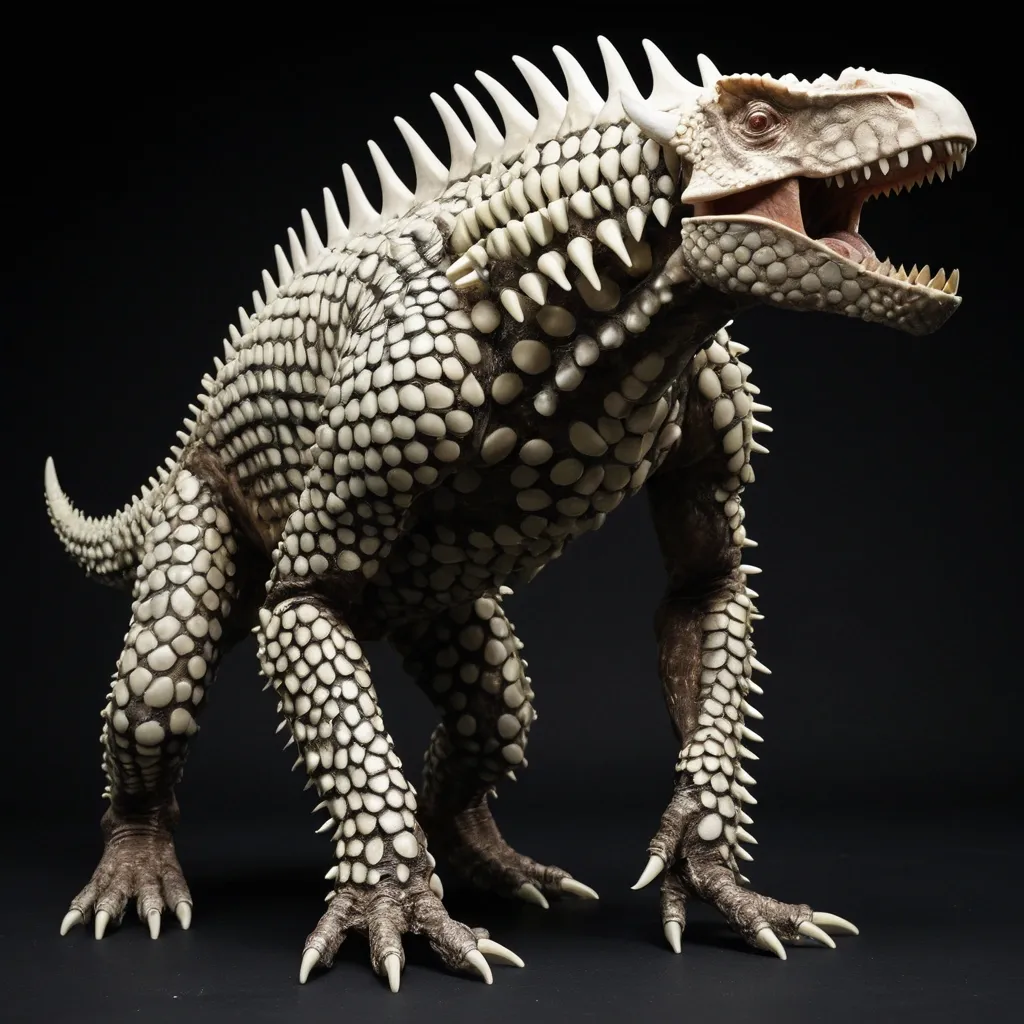
Physical Characteristics: Venenosus Regina is a titanic hybrid dinosaur standing approximately 20 feet tall at the shoulders and stretching 40 feet in length. Its frame is a powerful fusion of Tyrannosaurus rex and Giganotosaurus bulk , with a head shape that blends the robust cranial features of Giganotosaurus and the bony crown of Triceratops. The jawline is adorned with formidable bony spikes on each side , reminiscent of Triceratops horns , enhancing both offense and defense. Its body is armored with large , jet-black , glossy keratin scales inherited from Giant Pangolin DNA , interspersed with cream-colored underbelly patches. These scales are embedded with chromatophore cells from cuttlefish DNA , allowing Venenosus Regina to rapidly alter its skin color , texture , and pattern for camouflage or intimidation. The overall silhouette is muscular , lean and agile , with reduced hind legs that enable knuckle-walking , a trait borrowed from chimpanzee DNA , granting it a unique locomotion style that balances speed and stability.The forelimbs are robust and highly dexterous , equipped with slashing hook claws inspired by Saurophaganax and chimpanzee genetics , capable of delivering devastating swipes and manipulating tools or prey with precision. ,
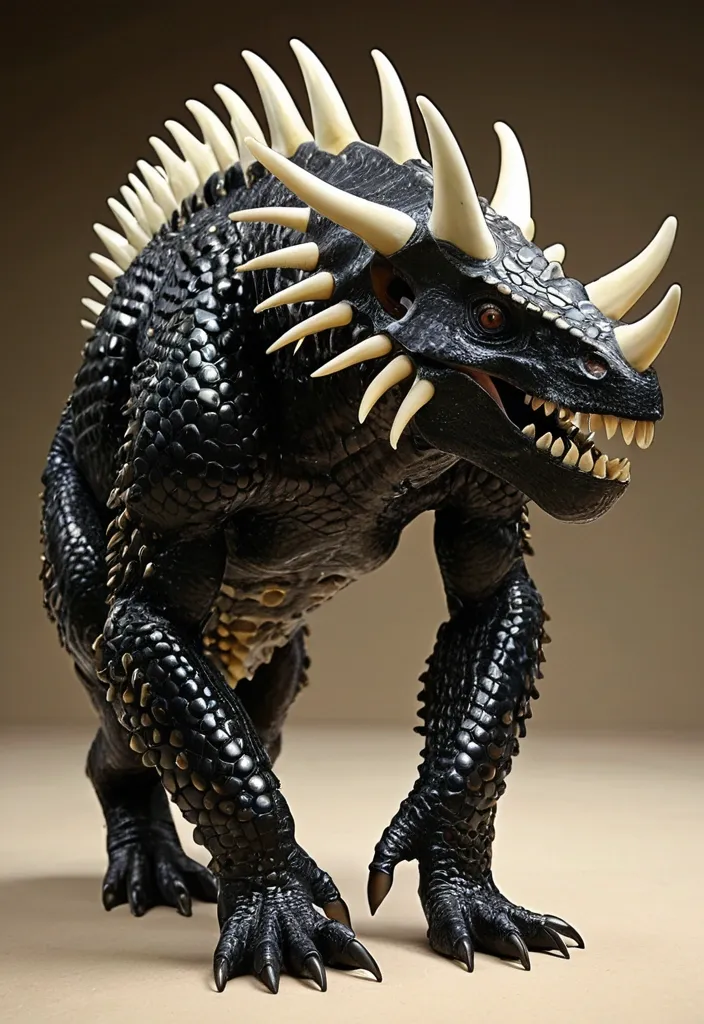
Physical Characteristics: Venenosus Regina is a titanic hybrid dinosaur standing approximately 20 feet tall at the shoulders and stretching 40 feet in length. Its frame is a powerful fusion of Tyrannosaurus rex and Giganotosaurus bulk , with a head shape that blends the robust cranial features of Giganotosaurus and the bony crown of Triceratops. The jawline is adorned with formidable bony spikes on each side , reminiscent of Triceratops horns , enhancing both offense and defense. Its body is armored with large , jet-black , glossy keratin scales inherited from Giant Pangolin DNA , interspersed with cream-colored underbelly patches. These scales are embedded with chromatophore cells from cuttlefish DNA , allowing Venenosus Regina to rapidly alter its skin color , texture , and pattern for camouflage or intimidation. The overall silhouette is muscular , lean and agile , with reduced hind legs that enable knuckle-walking , a trait borrowed from chimpanzee DNA , granting it a unique locomotion style that balances speed and stability.The forelimbs are robust and highly dexterous , equipped with slashing hook claws inspired by Saurophaganax and chimpanzee genetics , capable of delivering devastating swipes and manipulating tools or prey with precision. ,
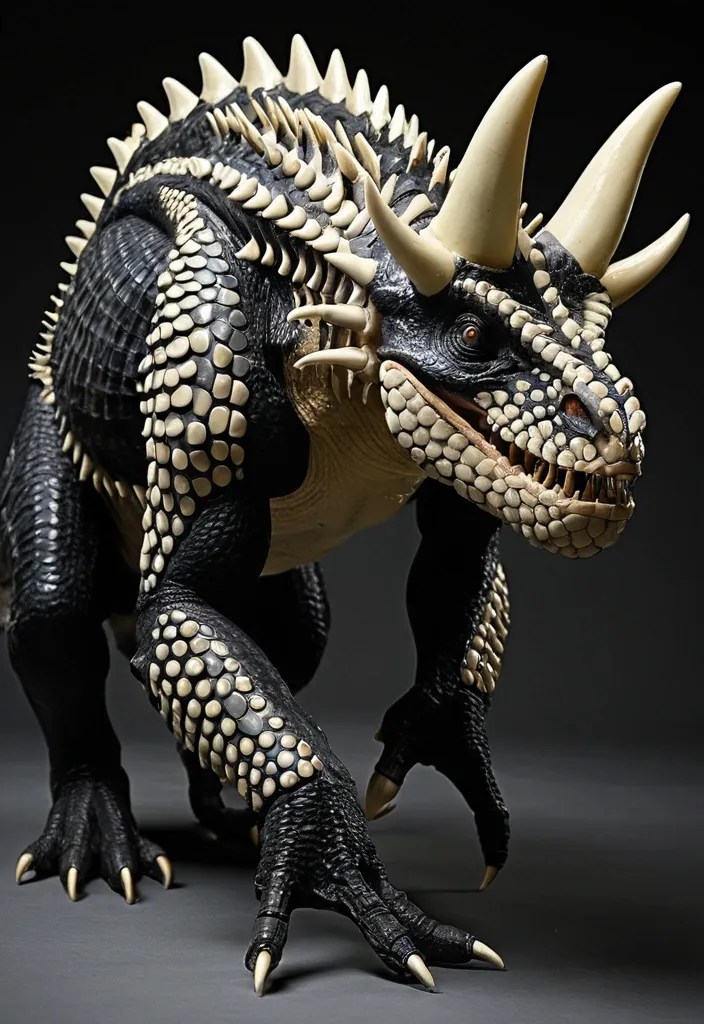
Physical Characteristics: Venenosus Regina is a titanic hybrid dinosaur standing approximately 20 feet tall at the shoulders and stretching 40 feet in length. Its frame is a powerful fusion of Tyrannosaurus rex and Giganotosaurus bulk , with a head shape that blends the robust cranial features of Giganotosaurus and the bony crown of Triceratops. The jawline is adorned with formidable bony spikes on each side , reminiscent of Triceratops horns , enhancing both offense and defense. Its body is armored with large , jet-black , glossy keratin scales inherited from Giant Pangolin DNA , interspersed with cream-colored underbelly patches. These scales are embedded with chromatophore cells from cuttlefish DNA , allowing Venenosus Regina to rapidly alter its skin color , texture , and pattern for camouflage or intimidation. The overall silhouette is muscular , lean and agile , with reduced hind legs that enable knuckle-walking , a trait borrowed from chimpanzee DNA , granting it a unique locomotion style that balances speed and stability.The forelimbs are robust and highly dexterous , equipped with slashing hook claws inspired by Saurophaganax and chimpanzee genetics , capable of delivering devastating swipes and manipulating tools or prey with precision. ,






